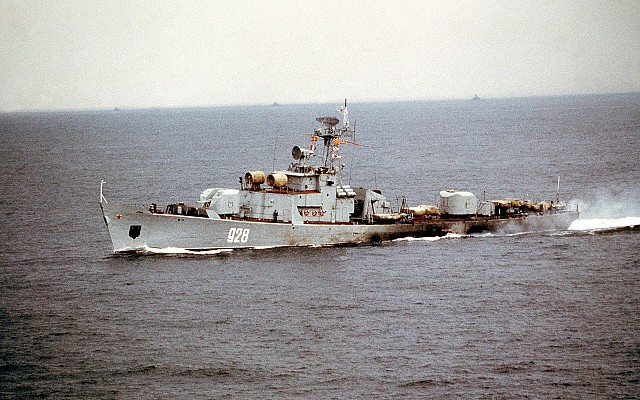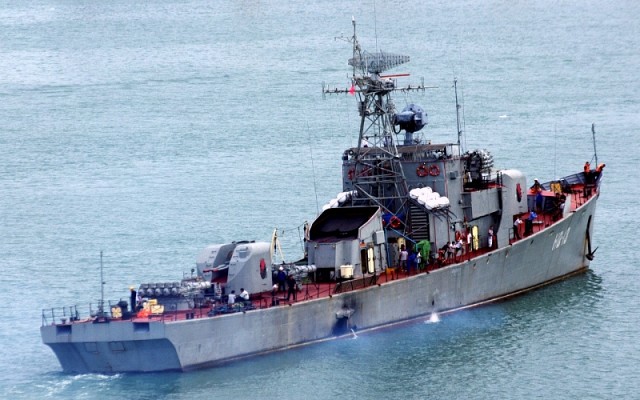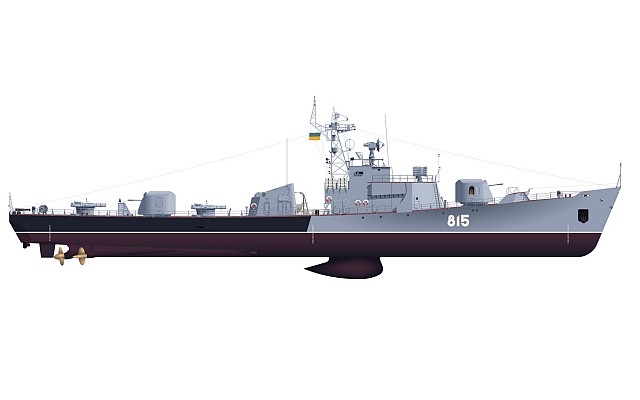Project 159 class
NATO: Petya class
Overview
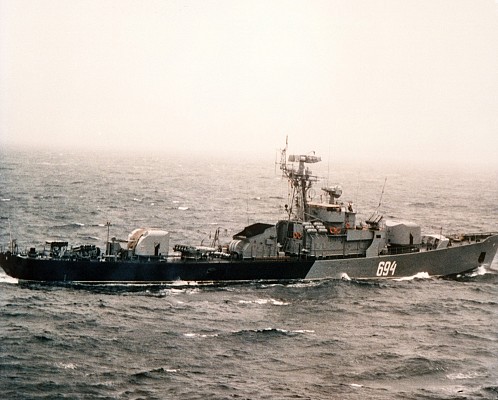
Project 159 class
Soviet navy Project 159 (NATO: Petya-I) class frigate seen at sea in 1985.
Source: US Navy -
© Public domain
1964 - 1972 (Project 159A)
1966 - 1978 (Project 159AE)
1973 - 1980 (upgrades to Pr. 159M)
Soviet Union - Khabarovsk shipyard
23 Project 159A
13 Project 159AE
9 upgraded to Project 159M
SKR-1 class
India
Vietnam
Description
Introduction
The Project 159 class is an early Cold War era class of anti-submarine warfare frigates of Soviet origin. The Soviet navy describe these vessels as Storozhevoi Korabl, or "patrol ships", while NATO designates them as light frigates. This class is notable as the first Soviet ocean going class with gas turbine engines. The NATO reporting name is Petya class, with numbers denoting subclasses.
Design
At just around 1.000 ton displacement these are light frigates, yet possess a good ocean going capacity. Propulsion consists of three engines, each connected to their own shaft for reduced complexity. A single diesel engine provides for economic propulsion at low speeds. Two gas turbine engines allow for dash speeds over 30 knots. These are intended to swiftly propel the Project 159 to target submarines that can be detected using the large hull mounted sonar array.
Sensors
Air and surface search is carried out by Fut-B or MR-302 Rubka radar system. A large hull mounted sonar is used to detect submarines. Some vessels include a variable depth sonar after refit. The combat management system is quite basic. An ESM and IFF system are present.
Firepower
Armament against surface and aerial targets is limited to two double barrel 76mm AK-726 dual purpose guns. These guns are connected to a fire control radar, allowing them to be used against aerial targets just over the speed of sound. The focus is on anti-submarine warfare. The older Project 159 have four RBU-2500 ASW rocket launchers, being replaced by two RBU-6000 in later subclasses. Soviet navy and some export models feature one or two quintuple torpedo tubes for 400mm SET-40 anti-submarine torpedoes. For export sales these have been replaced by a single triple tube setup for 533mm heavyweight torpedoes. There are also rails for naval mines and depth charges.
Mobility
Notable aspect of the mobility is the high speed that can be obtained using the gas turbines. Maximum speed is 32 to 33 knots. Autonomy of these vessels is about 10 days.
Users
Over 50 of these vessels were produced in three subclasses. Over time several ships were upgraded and a small numbers received unique modifications for testing new sonar systems or armament. In Soviet/Russian service a sizeable number was retained until the early 1990's. Several nations received the export variant or second hand Soviet vessels.
Variants

Project 159
Original Project 159 introduced in 1961. A total of 19 ships built from 1958 to 1965. Can be identified by older style superstructure and the four RBU-2500 ASW-rocket launchers, two in the B-position and two at the stern. NATO reporting name is Petya-I class.
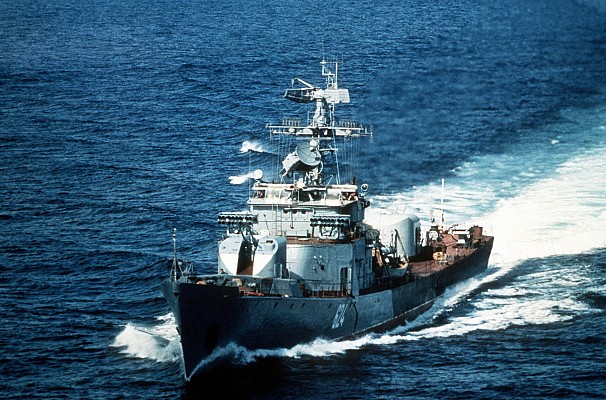
Project 159A
Updated Project 159 introduced in 1966. Total of 23 built from 1964 to 1972. NATO reporting name is Petya II. This introduces updated engines with similar output, improved search radar, variable depth sonar, redesigned superstructure with two RBU-6000 launchers with Burya fire control system and a second quintuple torpedo tube is added at the stern. NATO reporting name is Petya-II class.
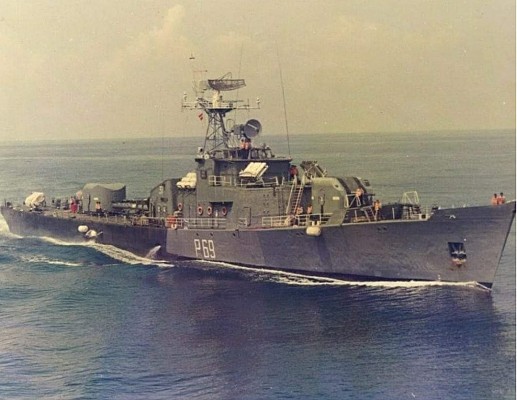
Project 159AE
Export variant for Project 159A introduced in 1968. Total of 13 ships built from 1967 to 1978. Compared to the Project 159A the engine output is reduced and the two quintuple 400mm lightweight torpedo tubes have been replaced by a single triple tube launcher for 533mm heavyweight torpedoes. Those in service with India have 4x RBU-2500, those in service with Vietnam 2x RBU-6000. NATO reporting name is Petya-III class.
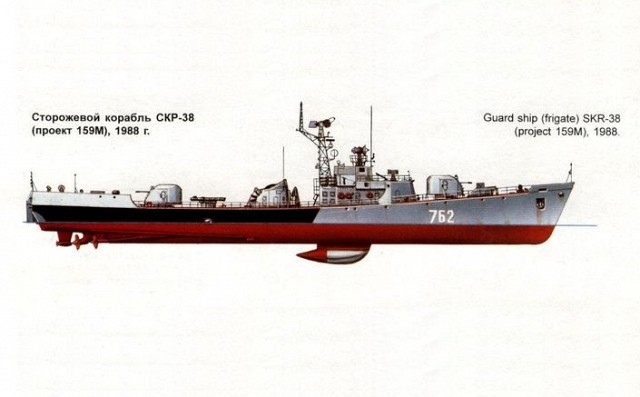
Project 159M
Update program applied to 9 of the original Project 159 from 1973 to 1980. This adds the newer MG-325 Vega sonar system, removes the stern RBU-2500 and replaces the Fut-N radar with the MR-302 Rubka as found on Project 159A. NATO reporting name is Modified Petya-I class.
Details
Media
Subcomponents
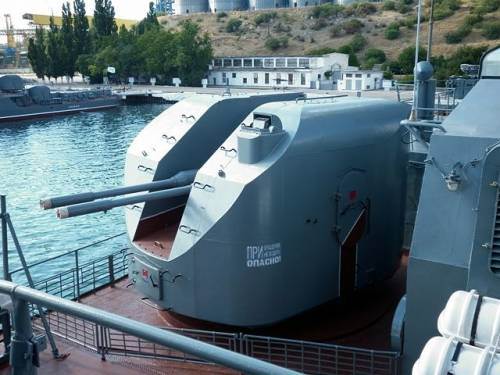
76mm AK-726
2x2 76mm AK-726 dual purpose guns in all Project 159 subclasses. These guns provide anti-surface and anti-aircraft fire.
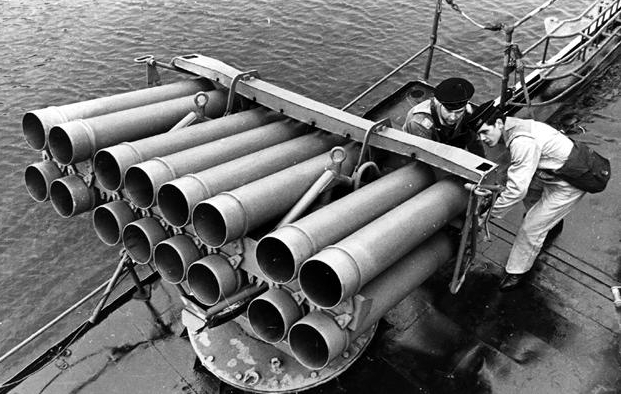
RBU-2500 Smerch
4x 16-tube RBU-2500 on Project 159 (NATO: Petya-I). Two launchers on the forward superstructure and two at the stern.
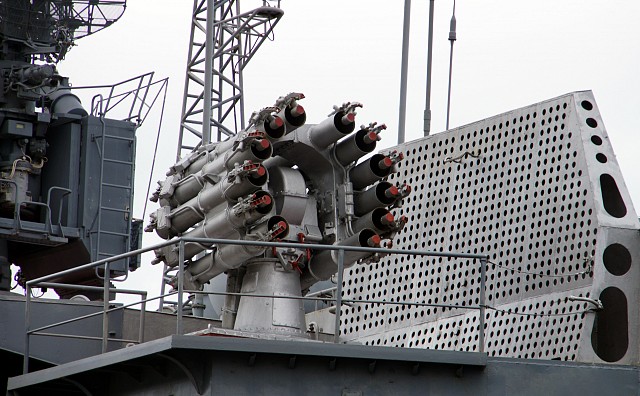
RBU-6000 Smerch-2
2x 12-tube RBU-6000 on the forward superstructure of the Project 159A and AE subclasses.
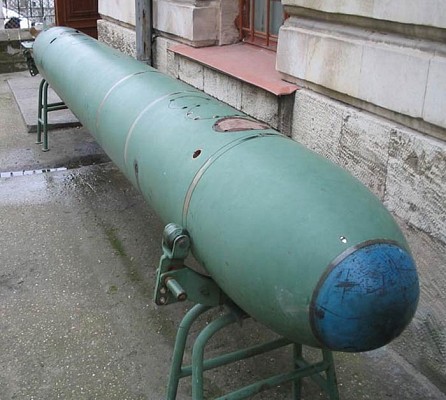
SET-40
1x5 (on Project 159) or 2x5 (on Project 159A) torpedo tubes for the 400mm SET-40 lightweight anti-submarine warfare torpedo.
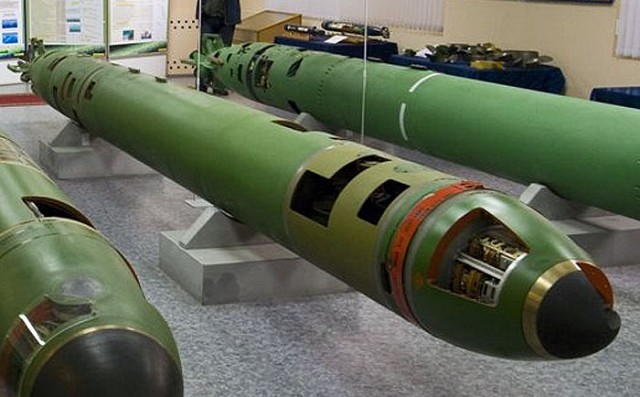
SET-65E
1x3 torpedo tubes for SET-65E (and possibly other types of) 533mm torpedoes.
